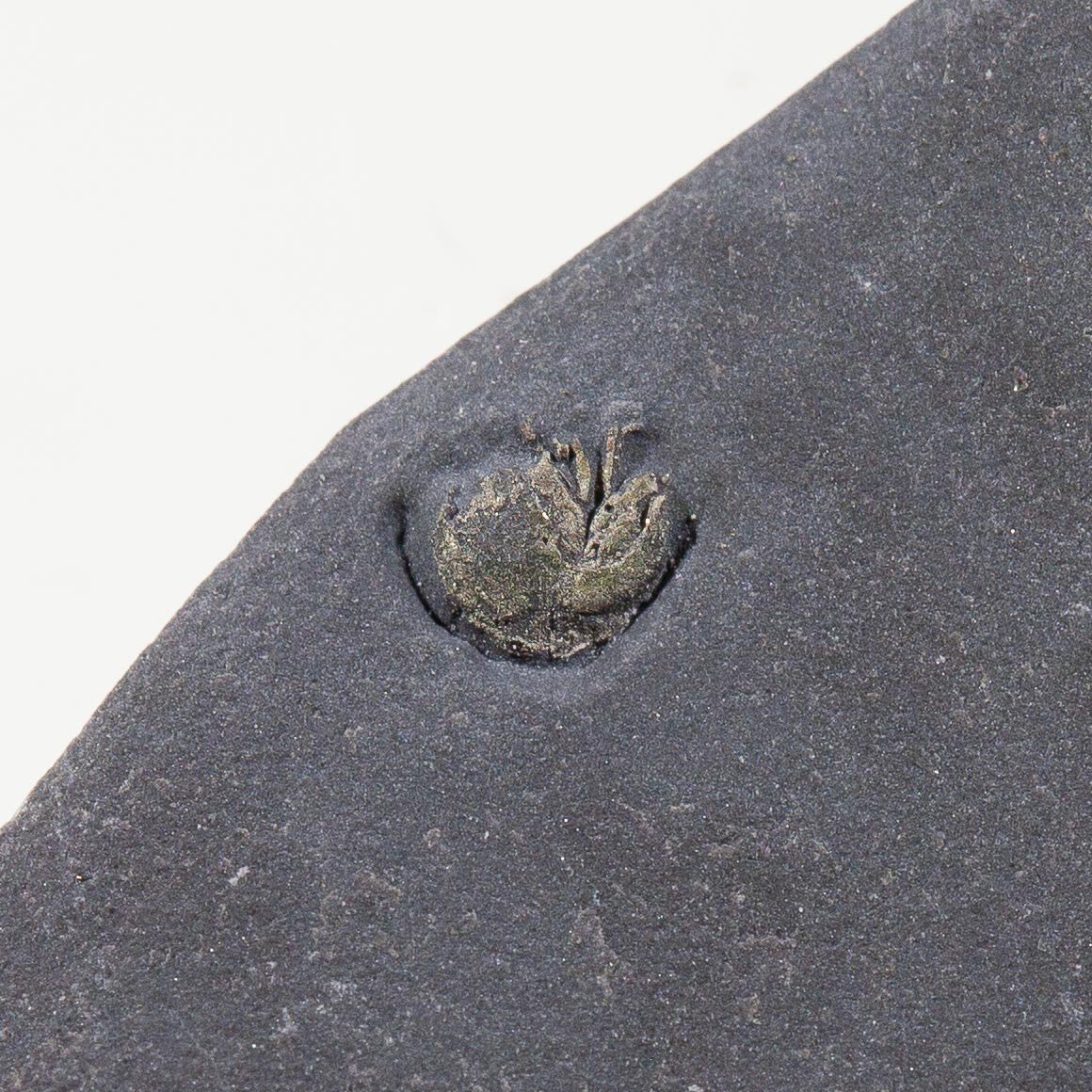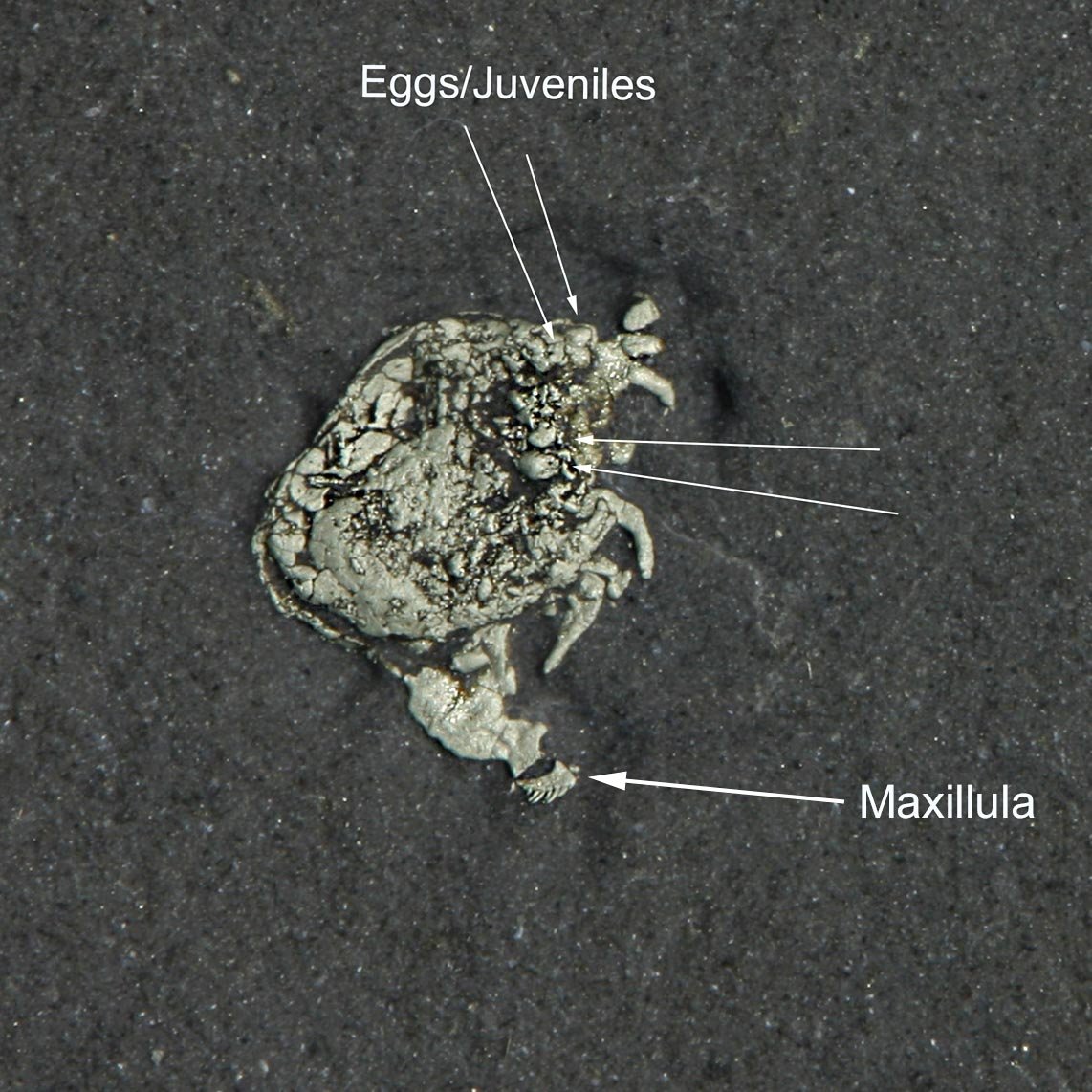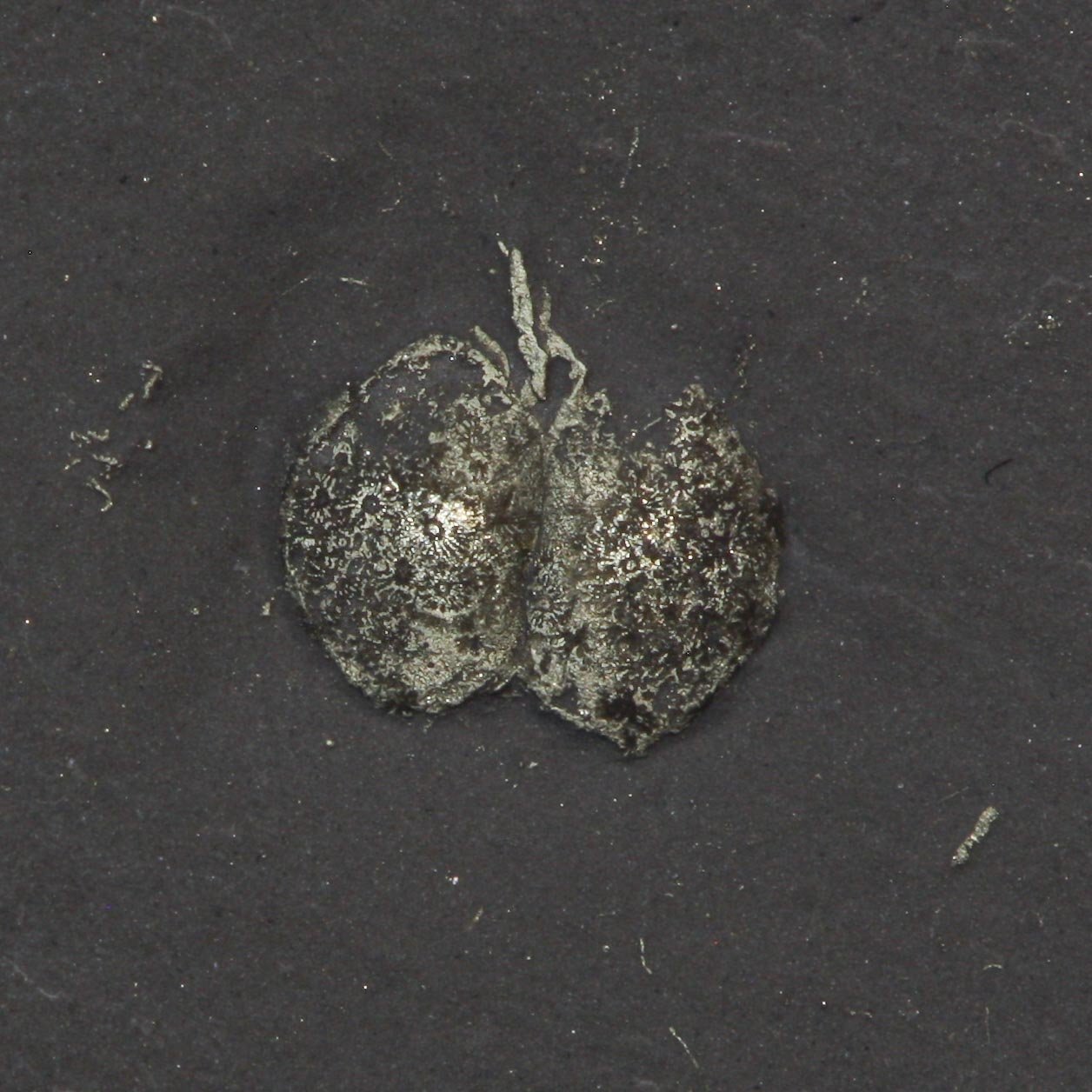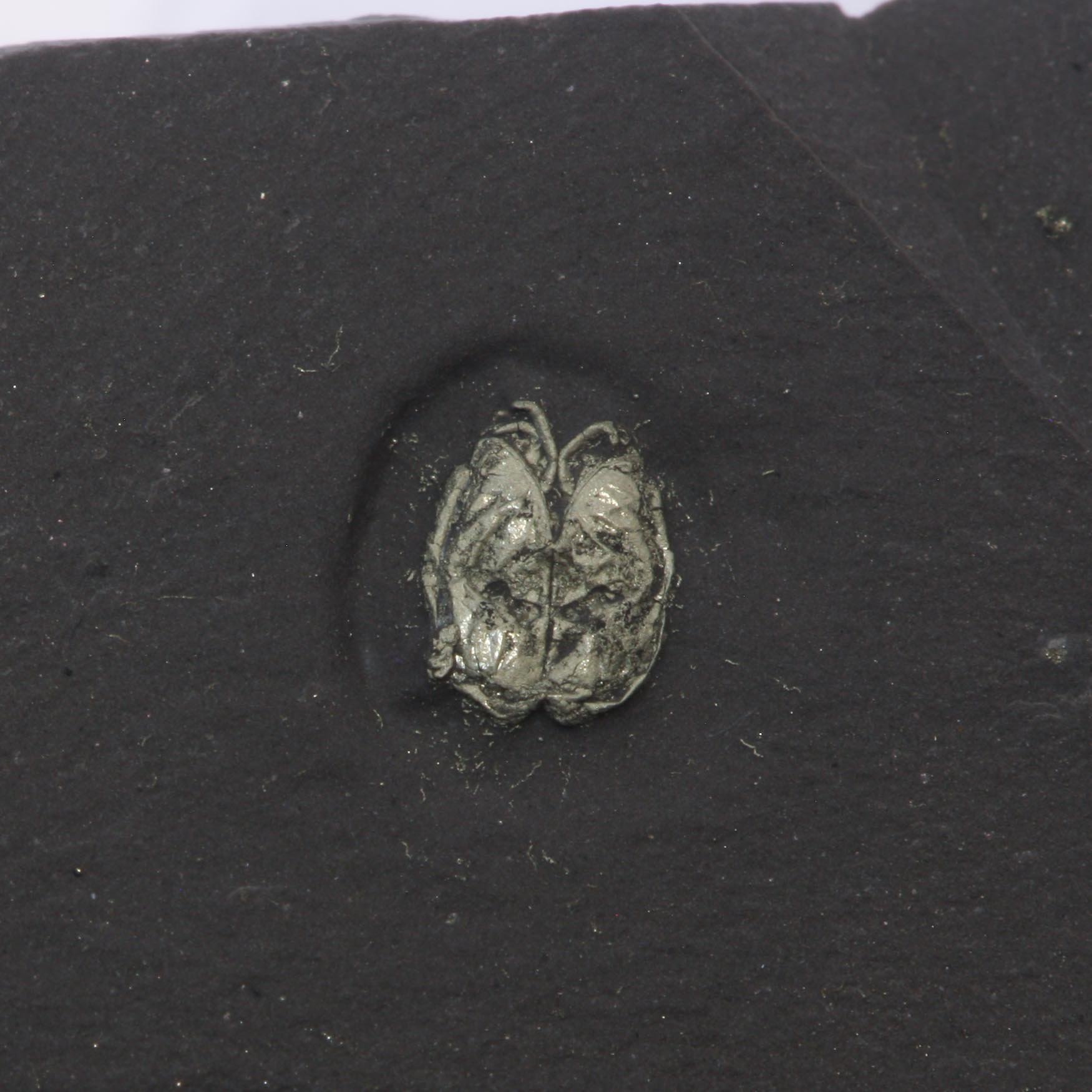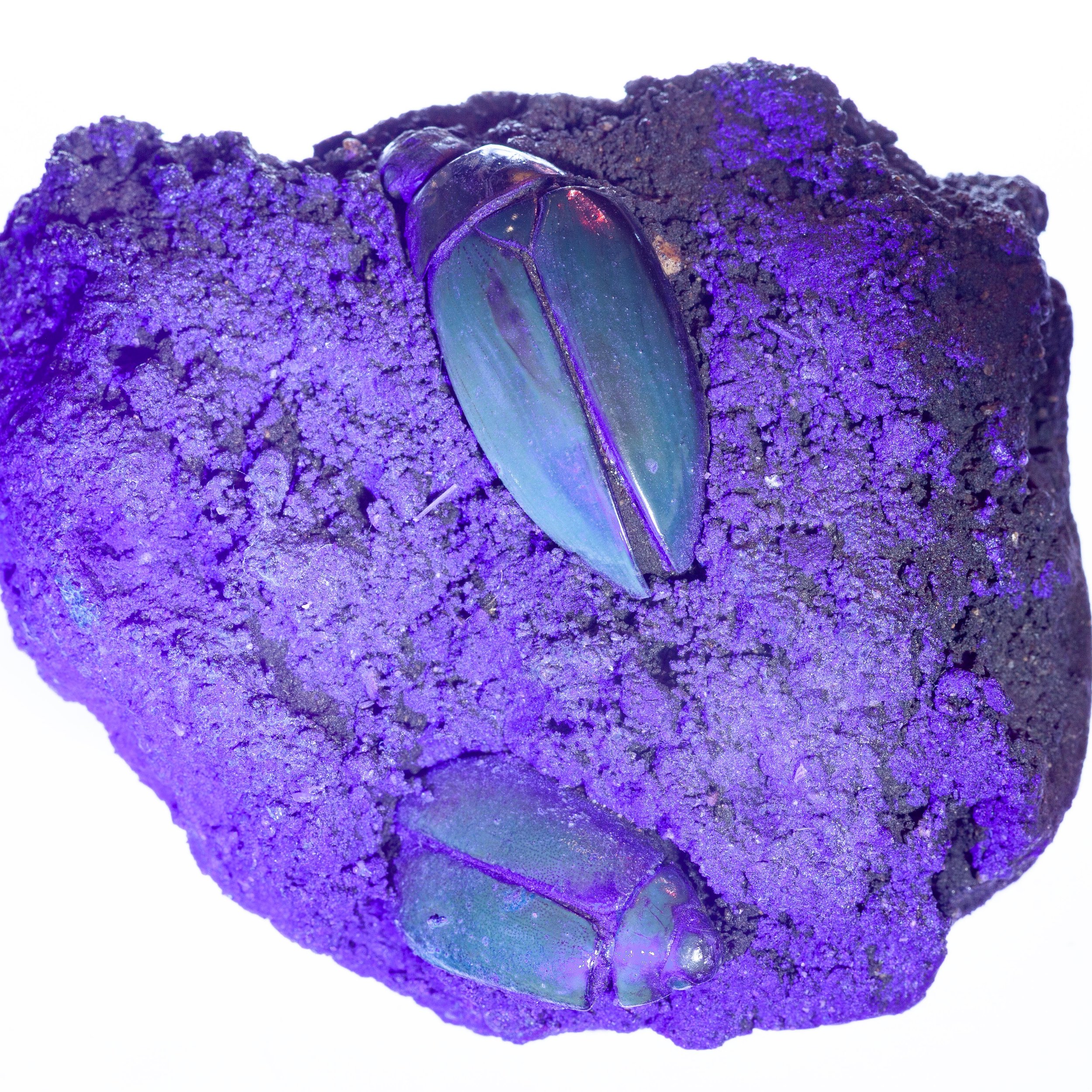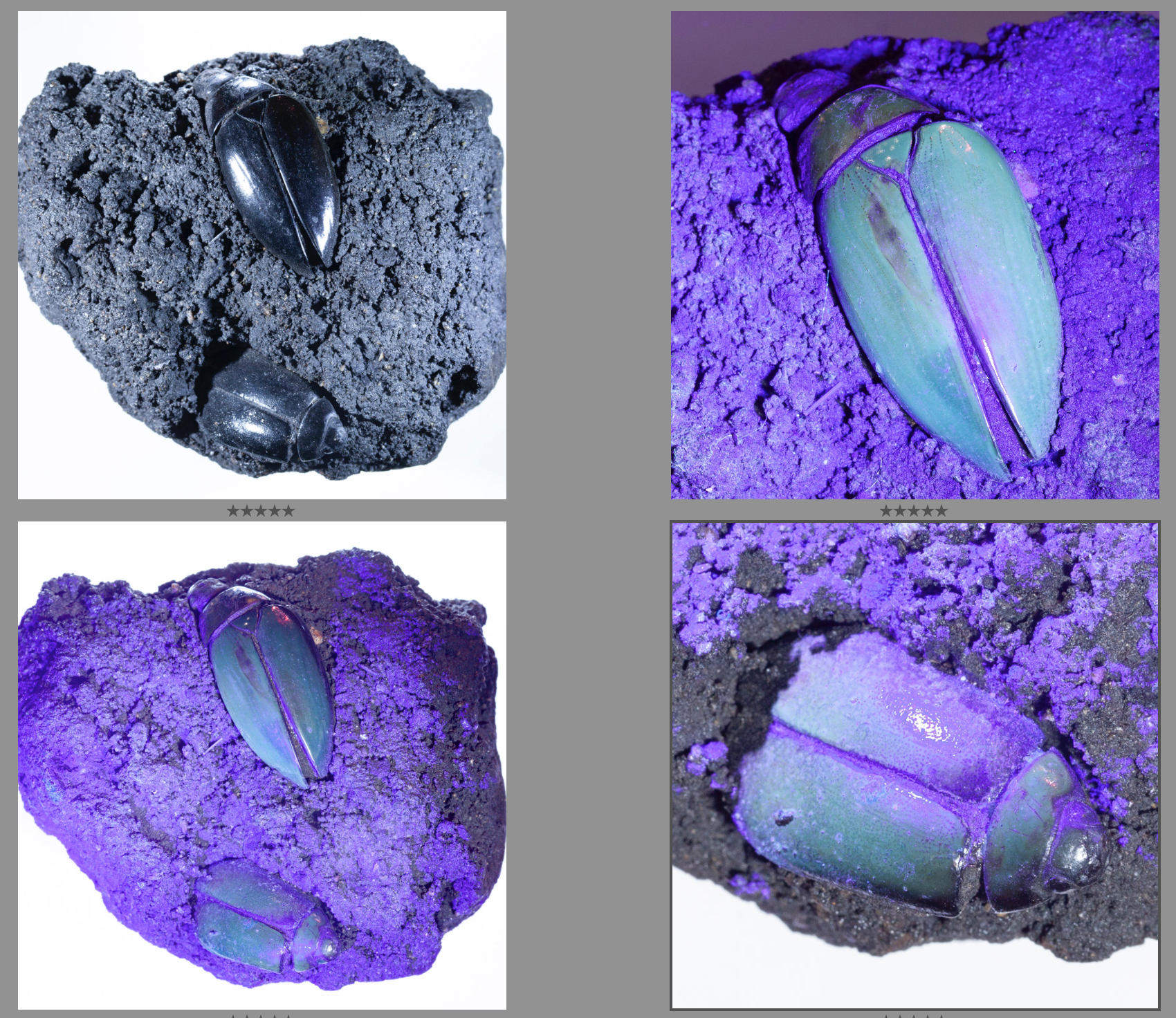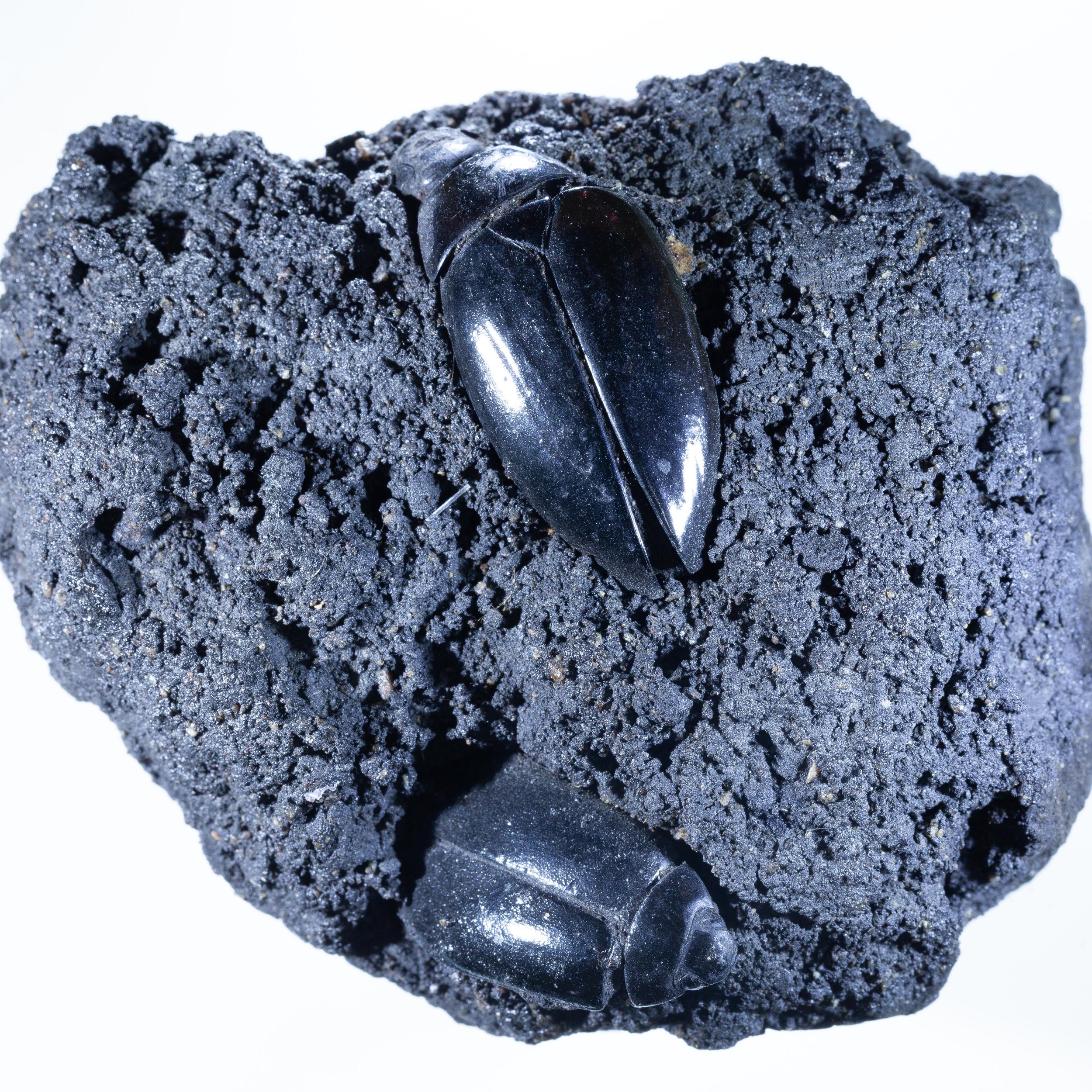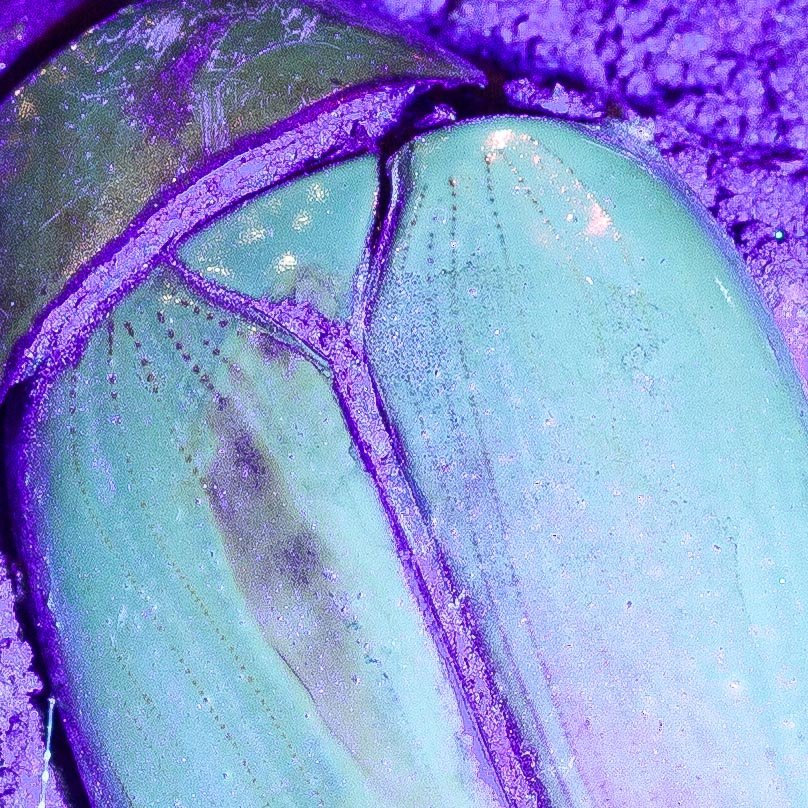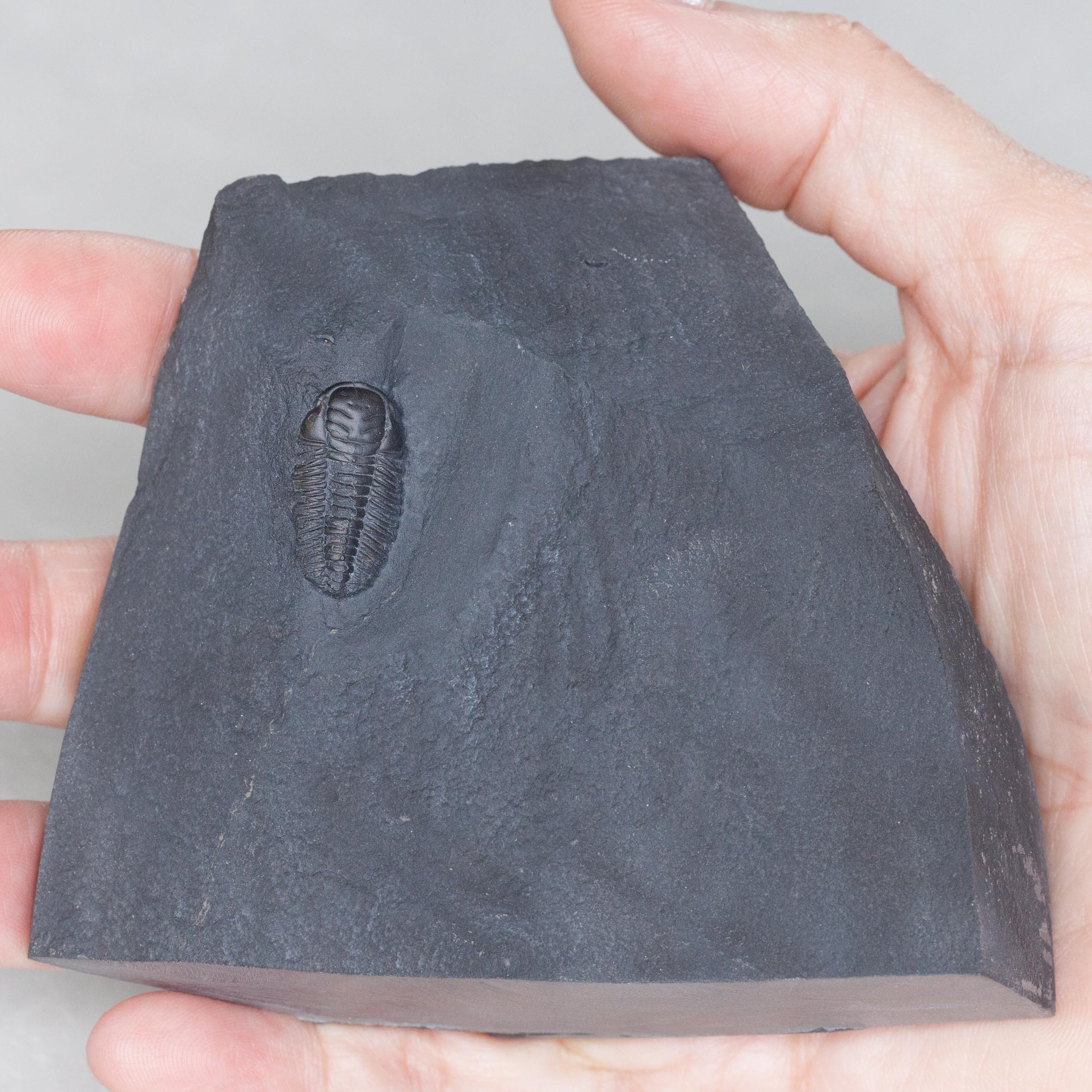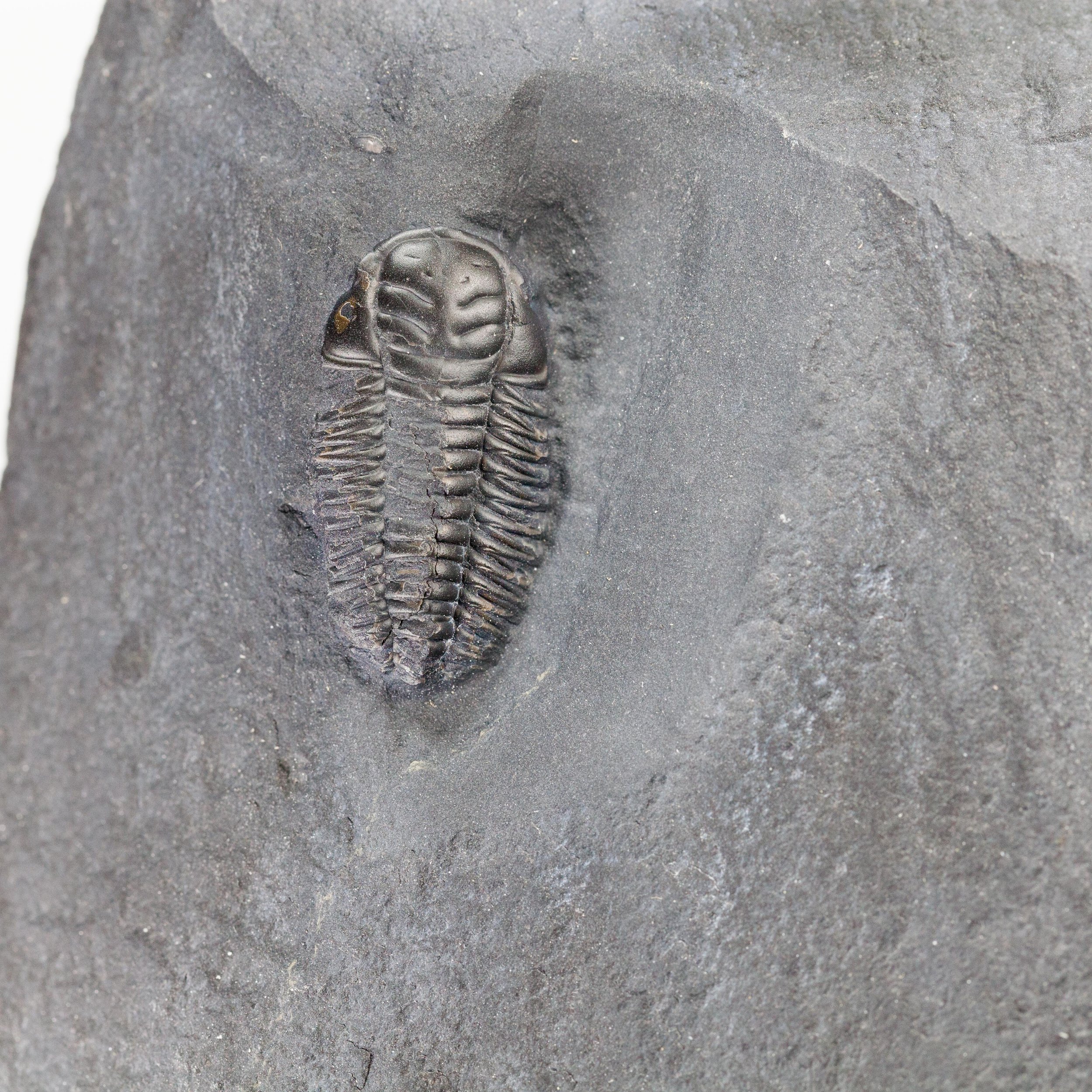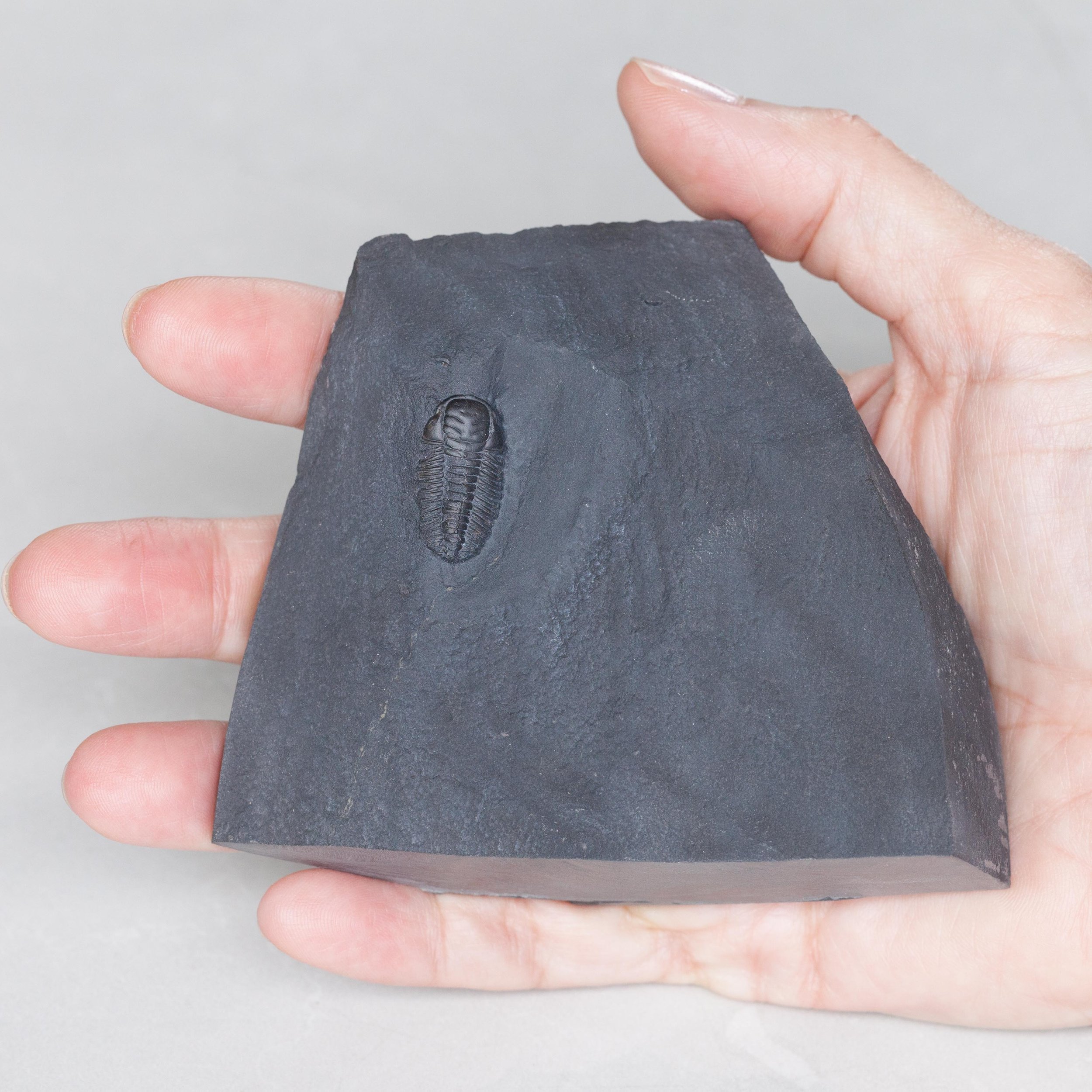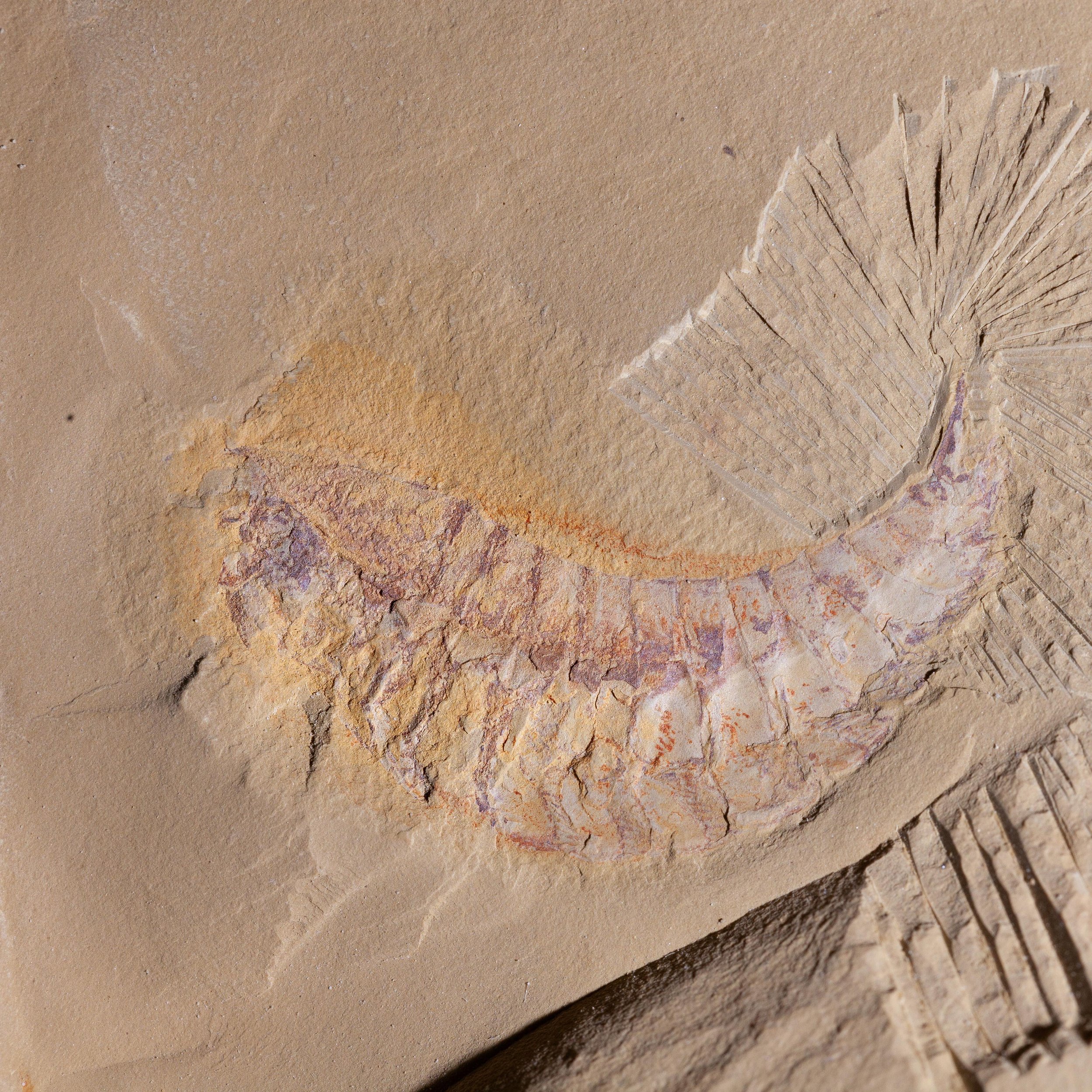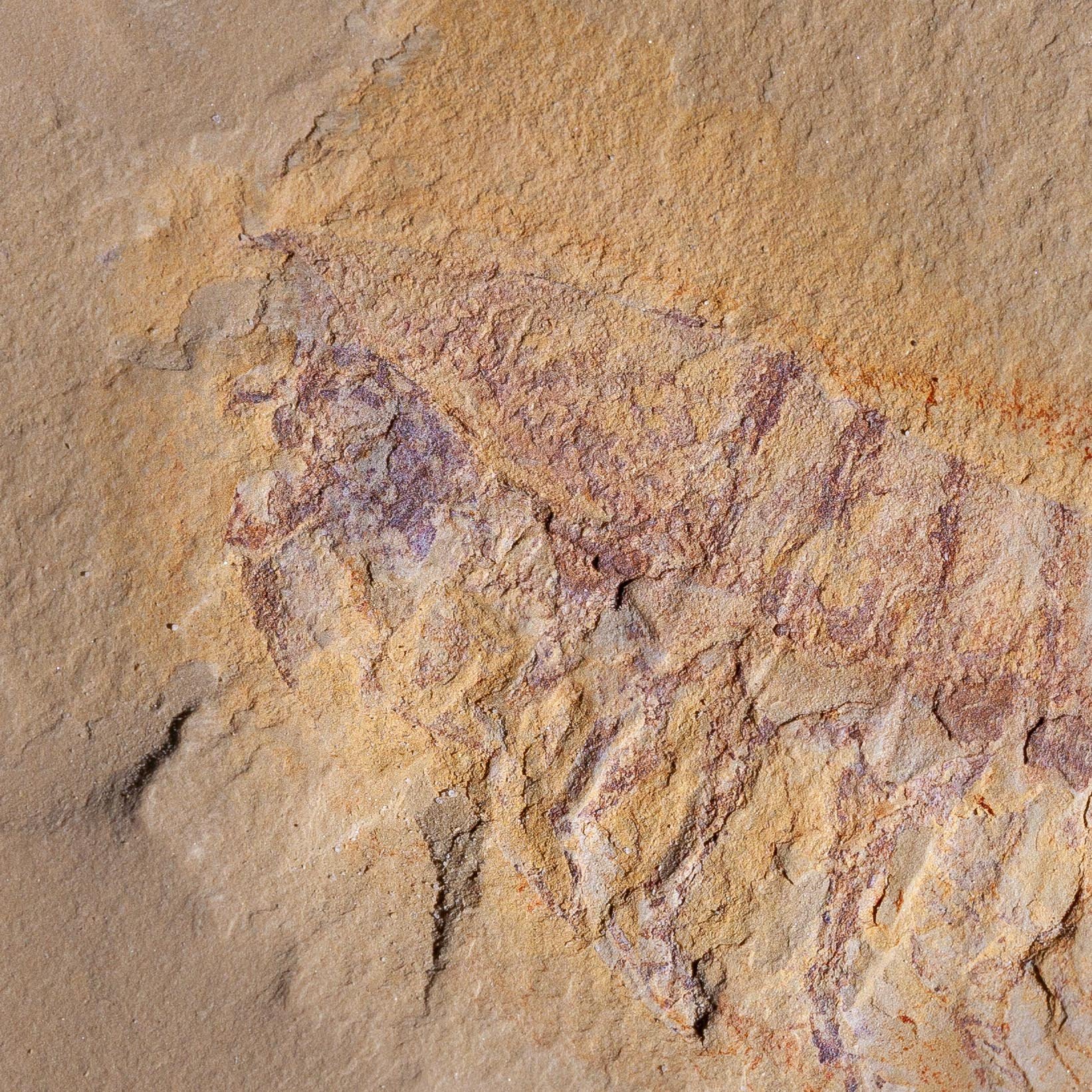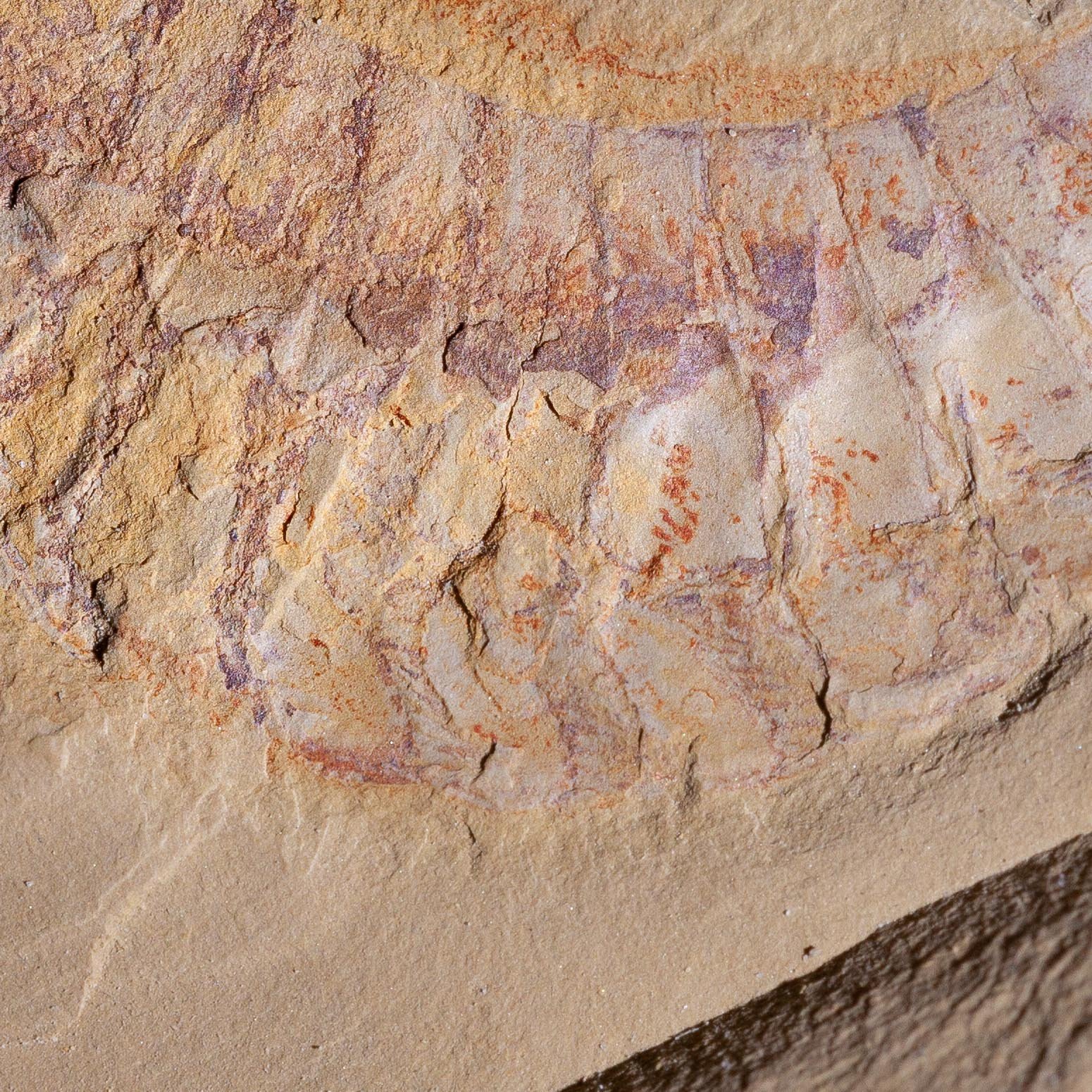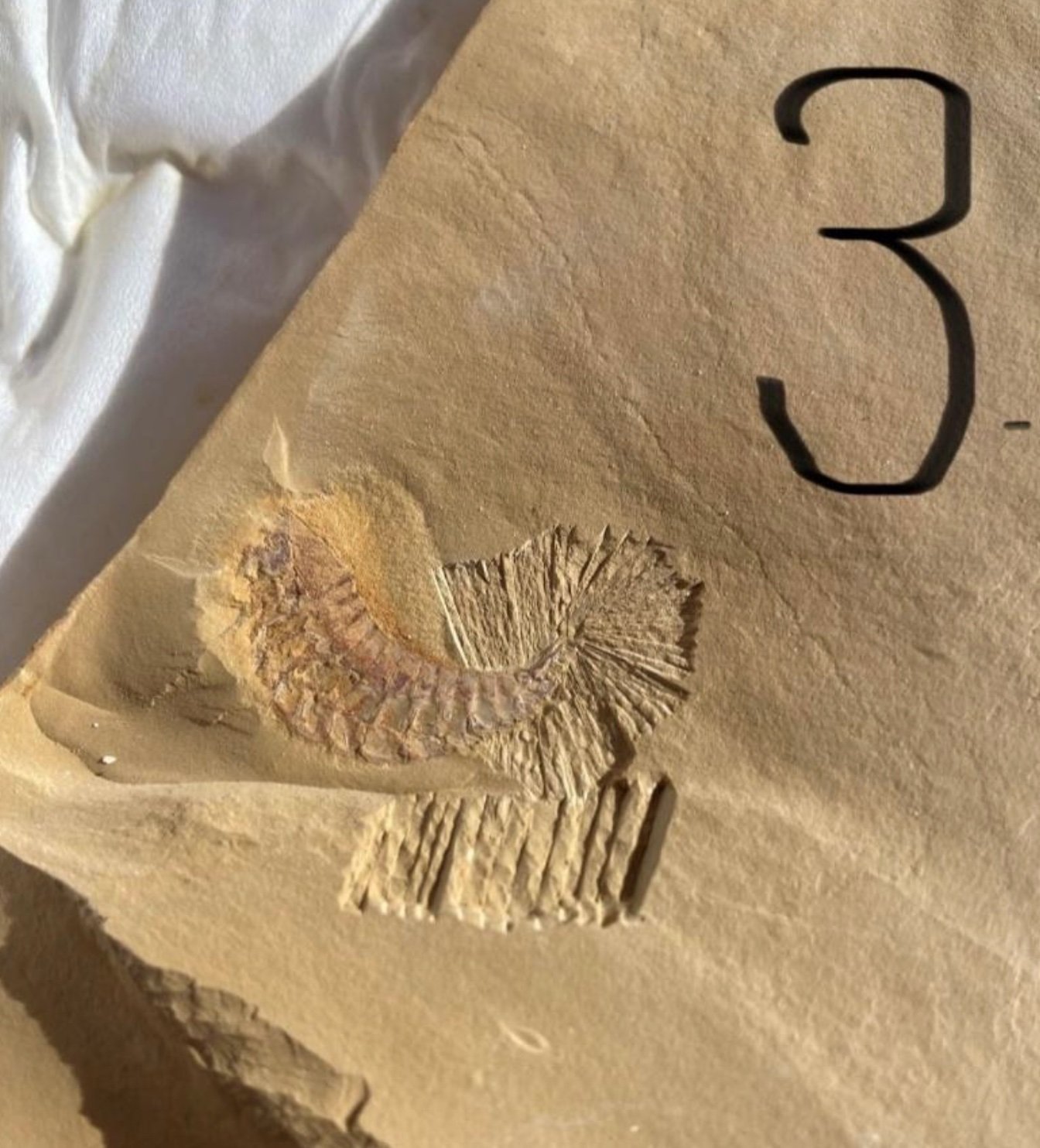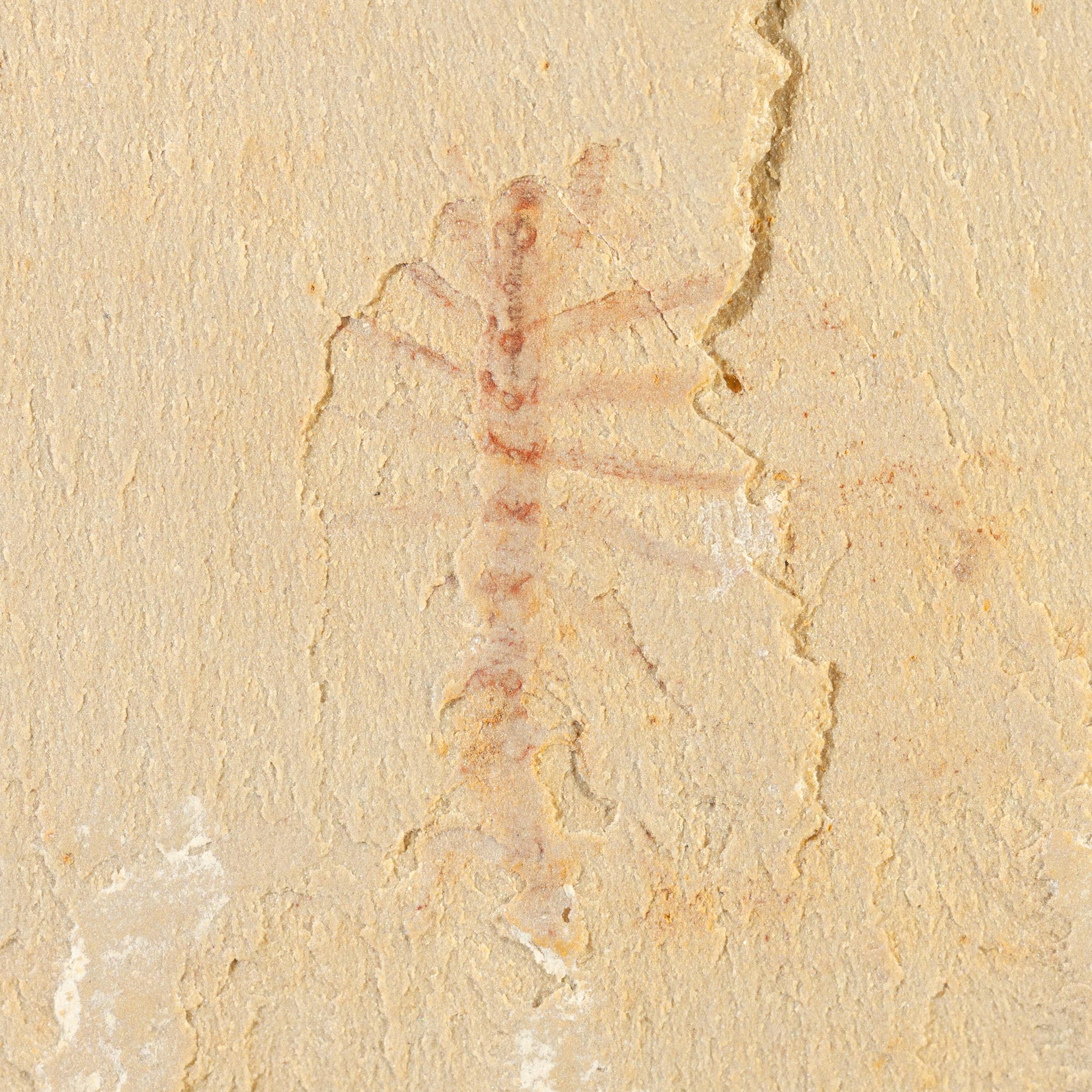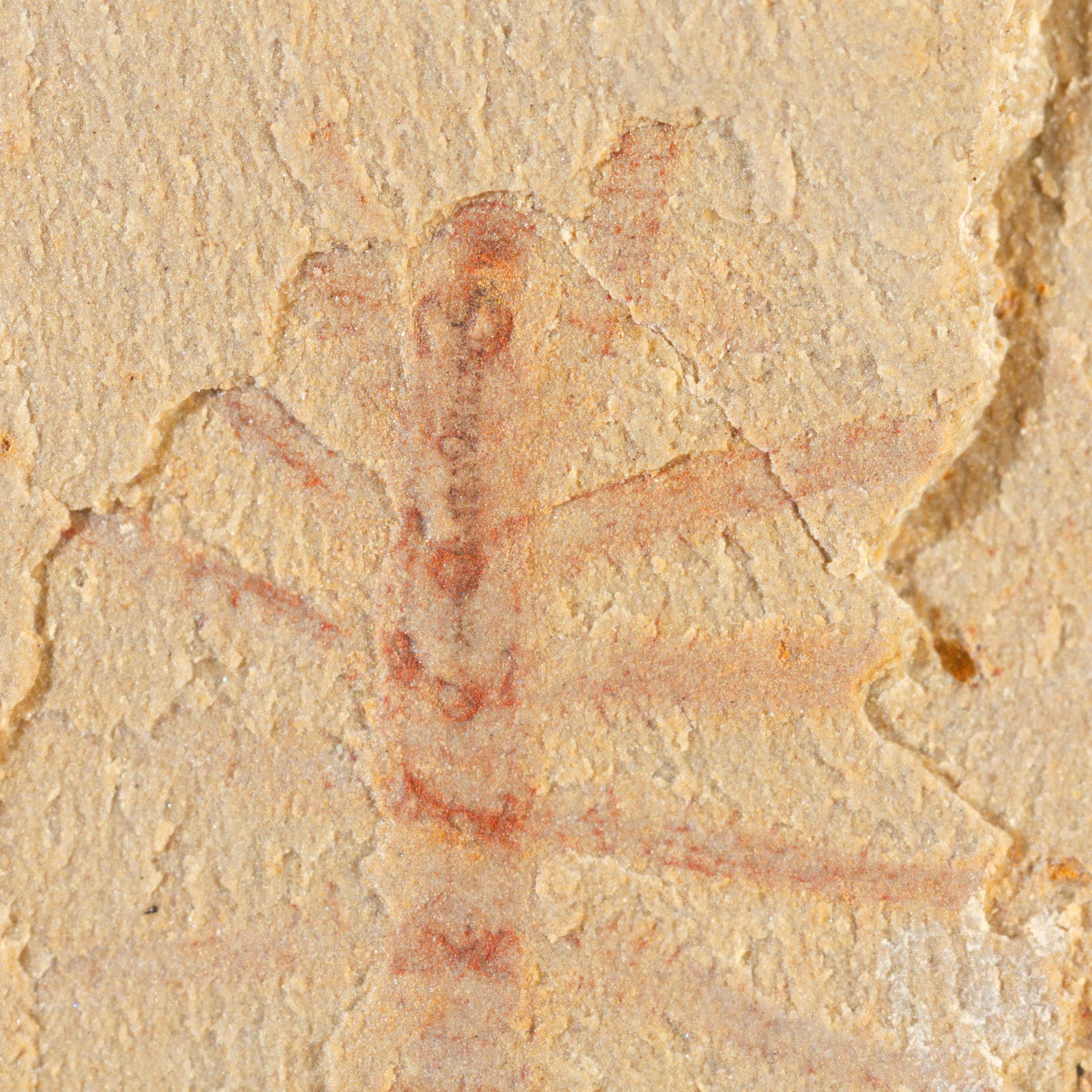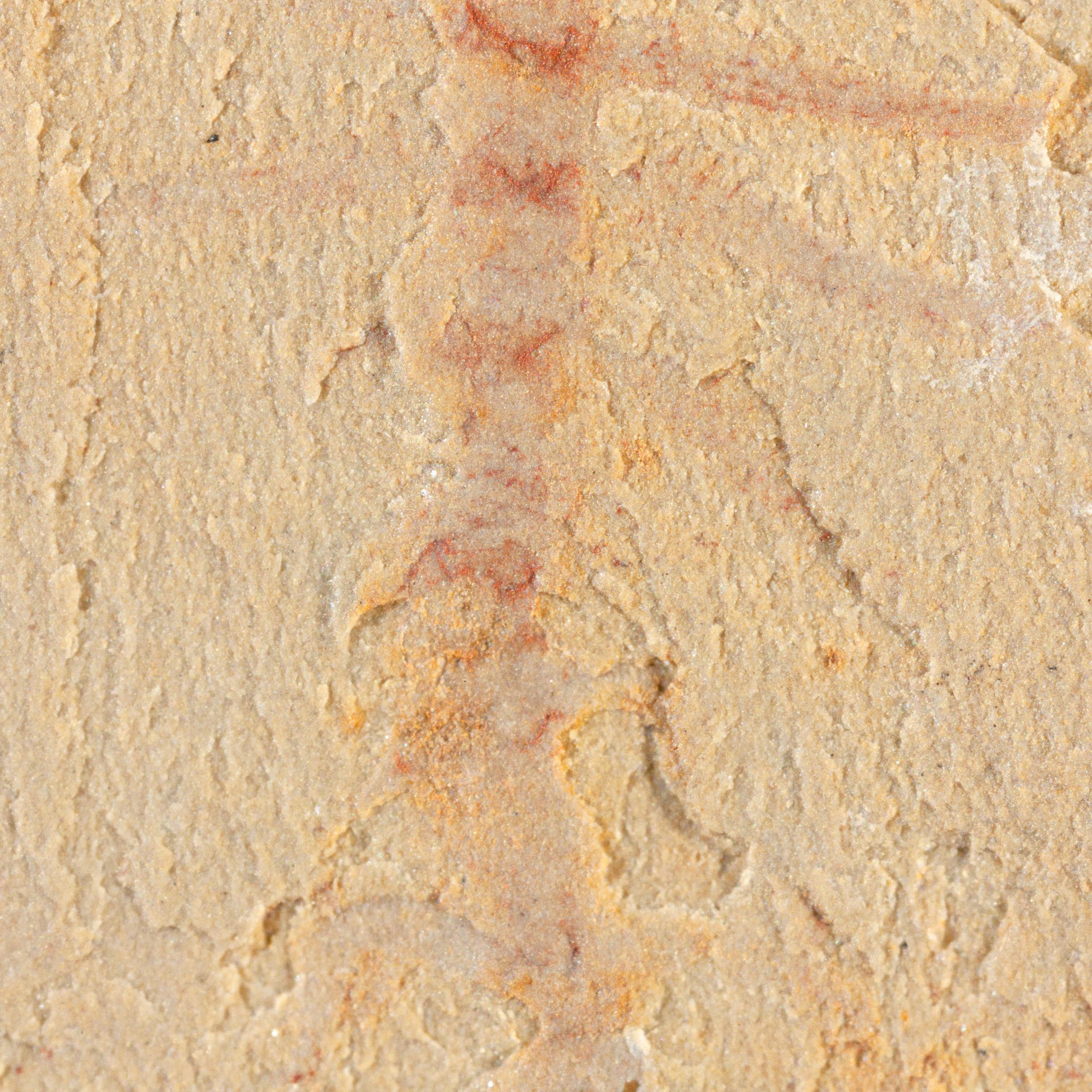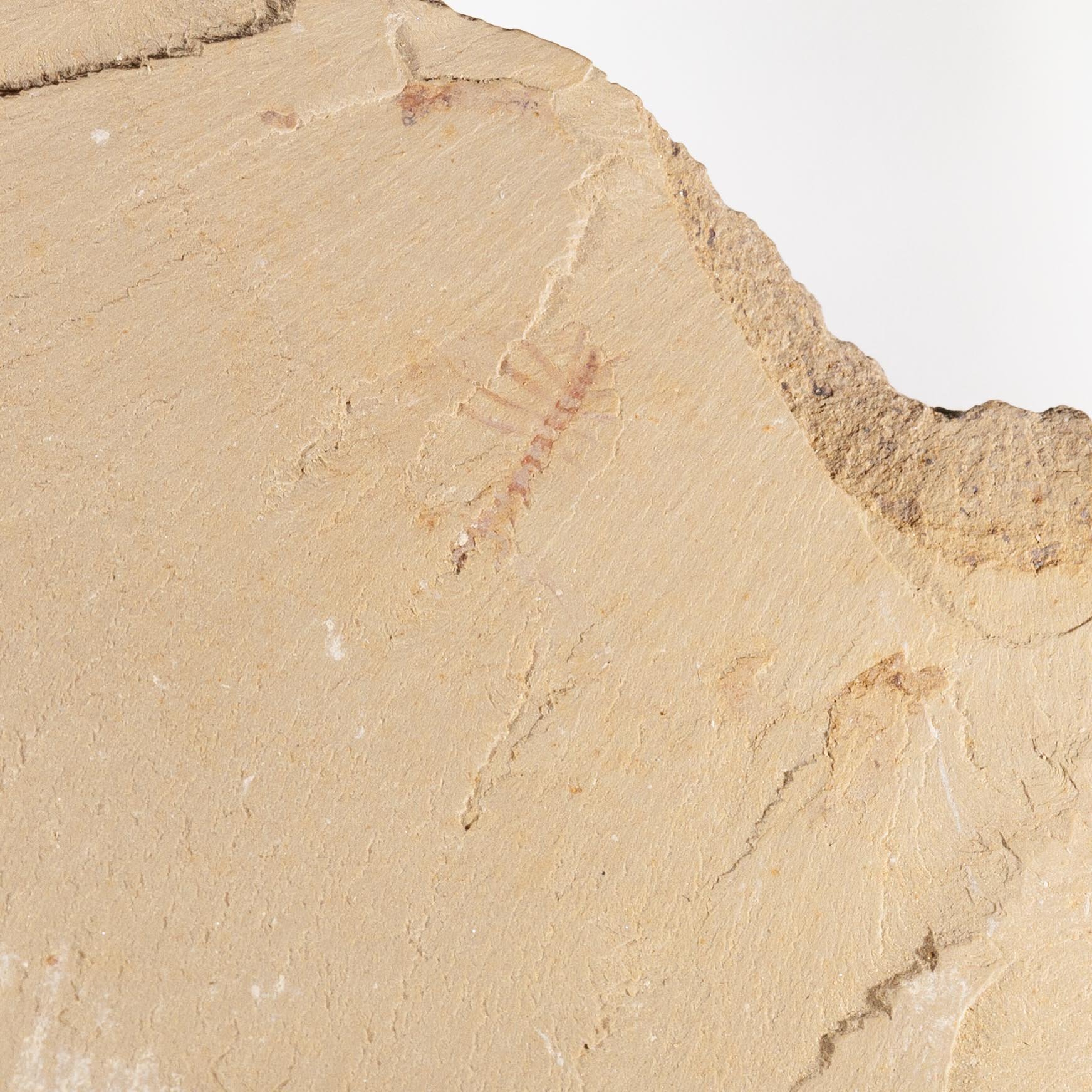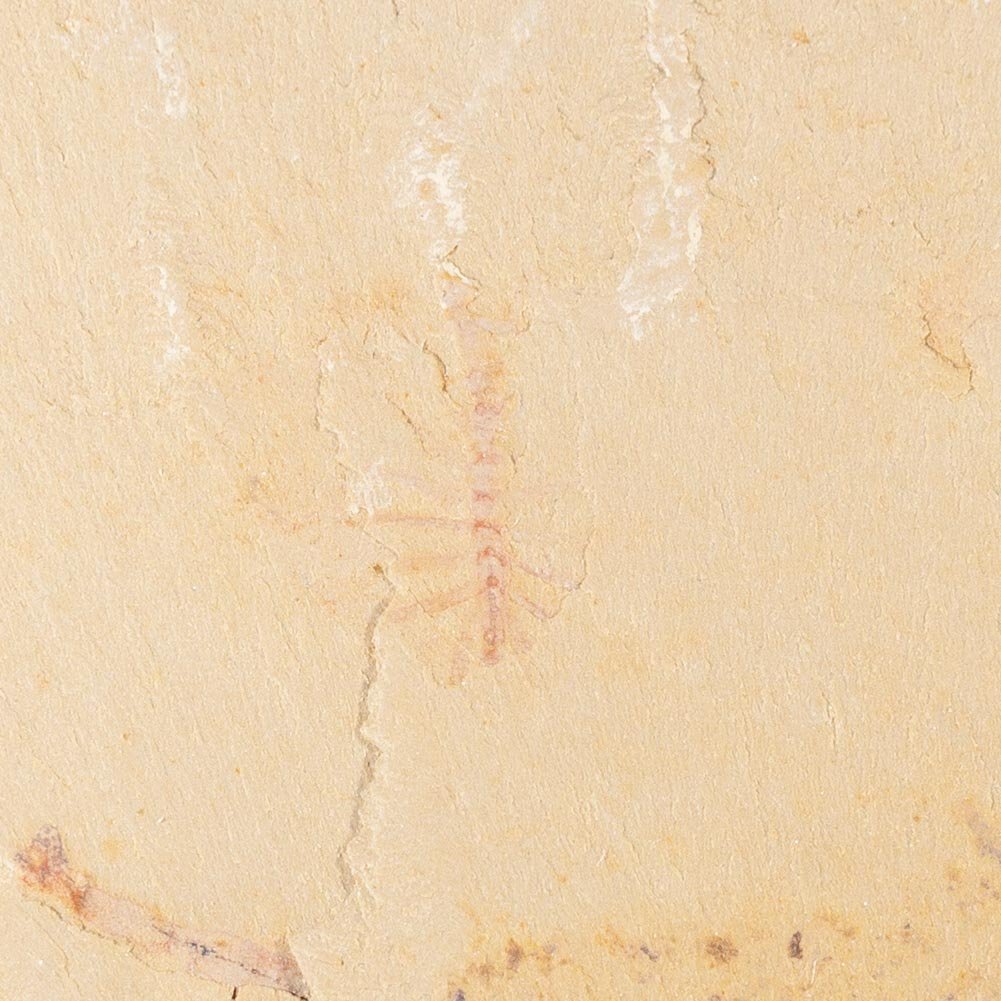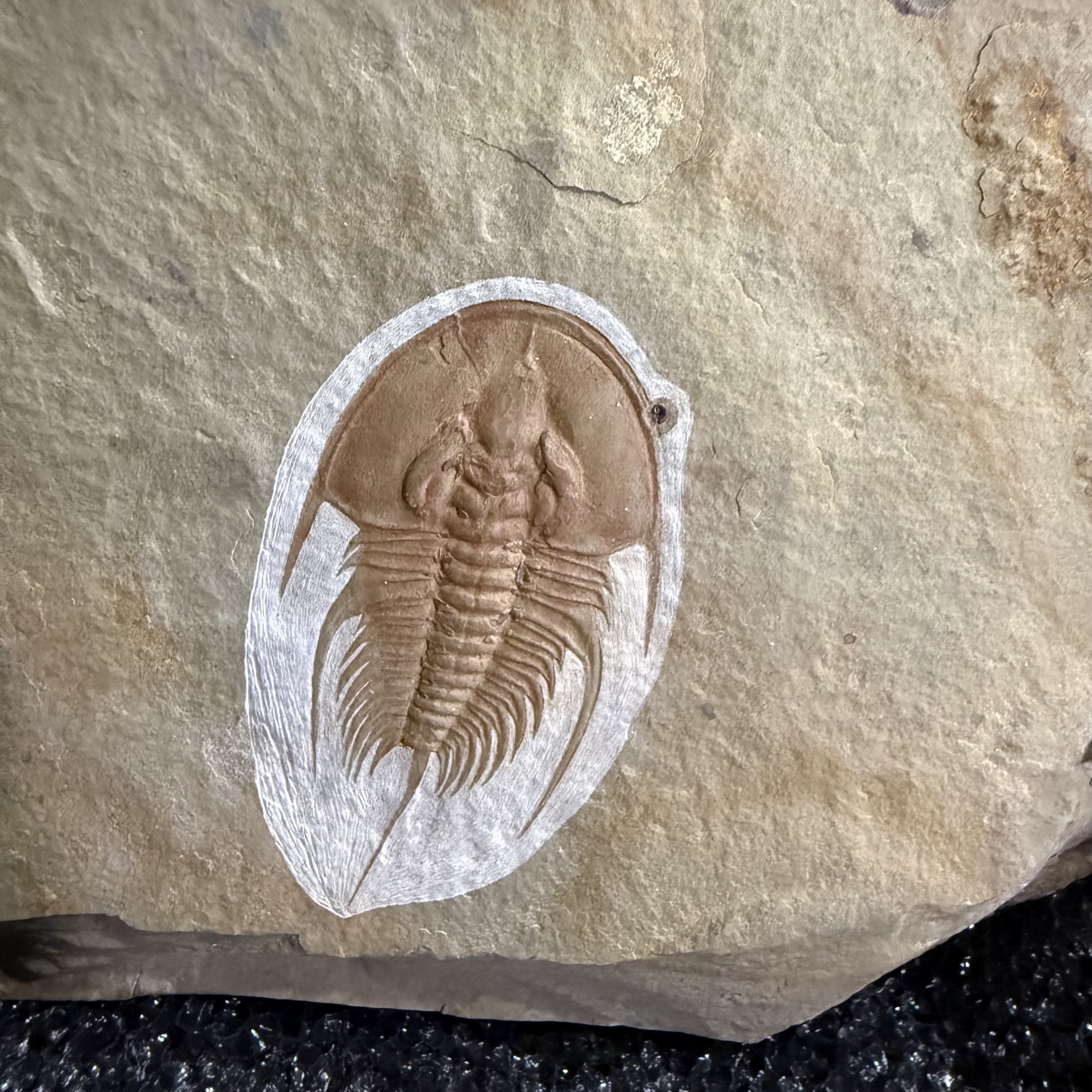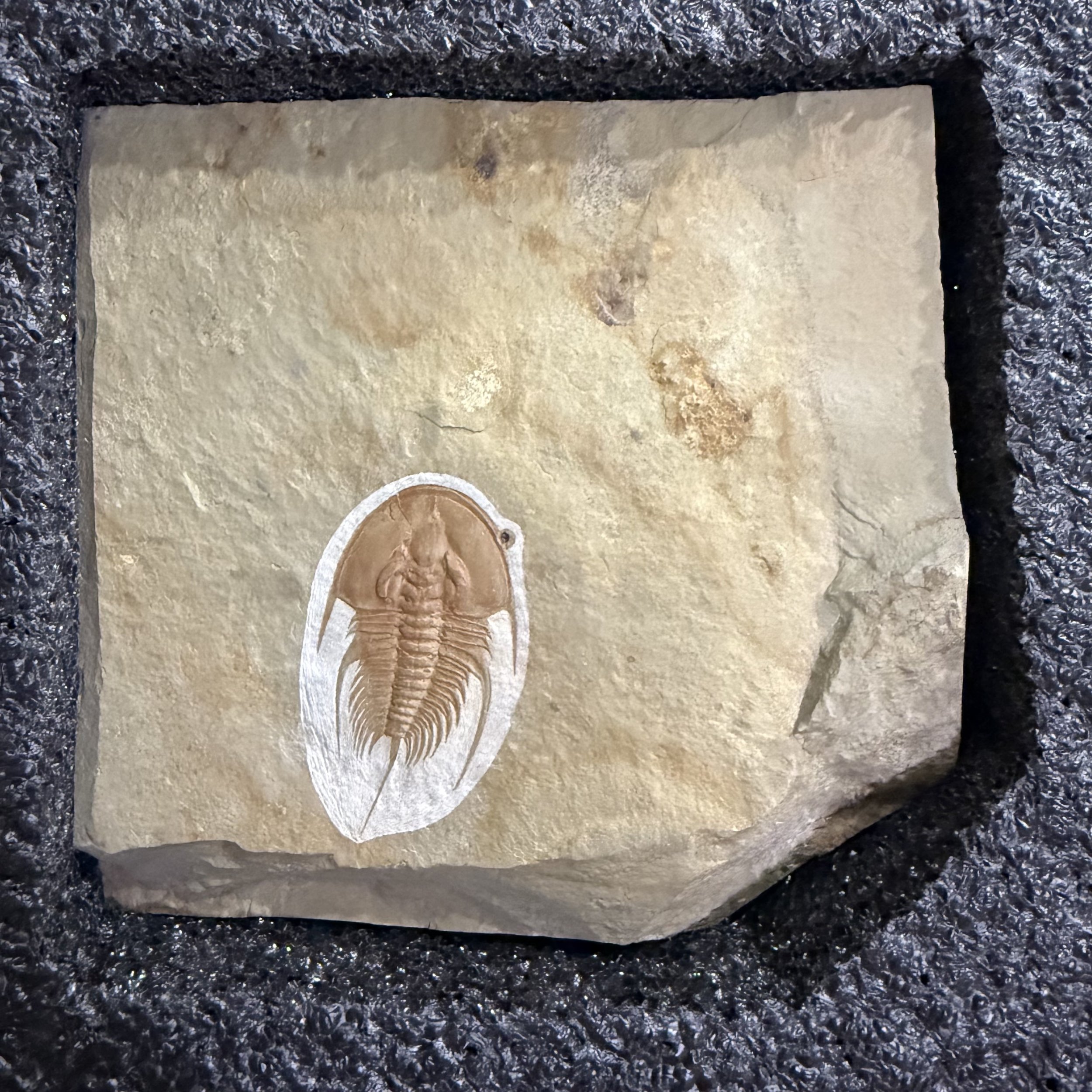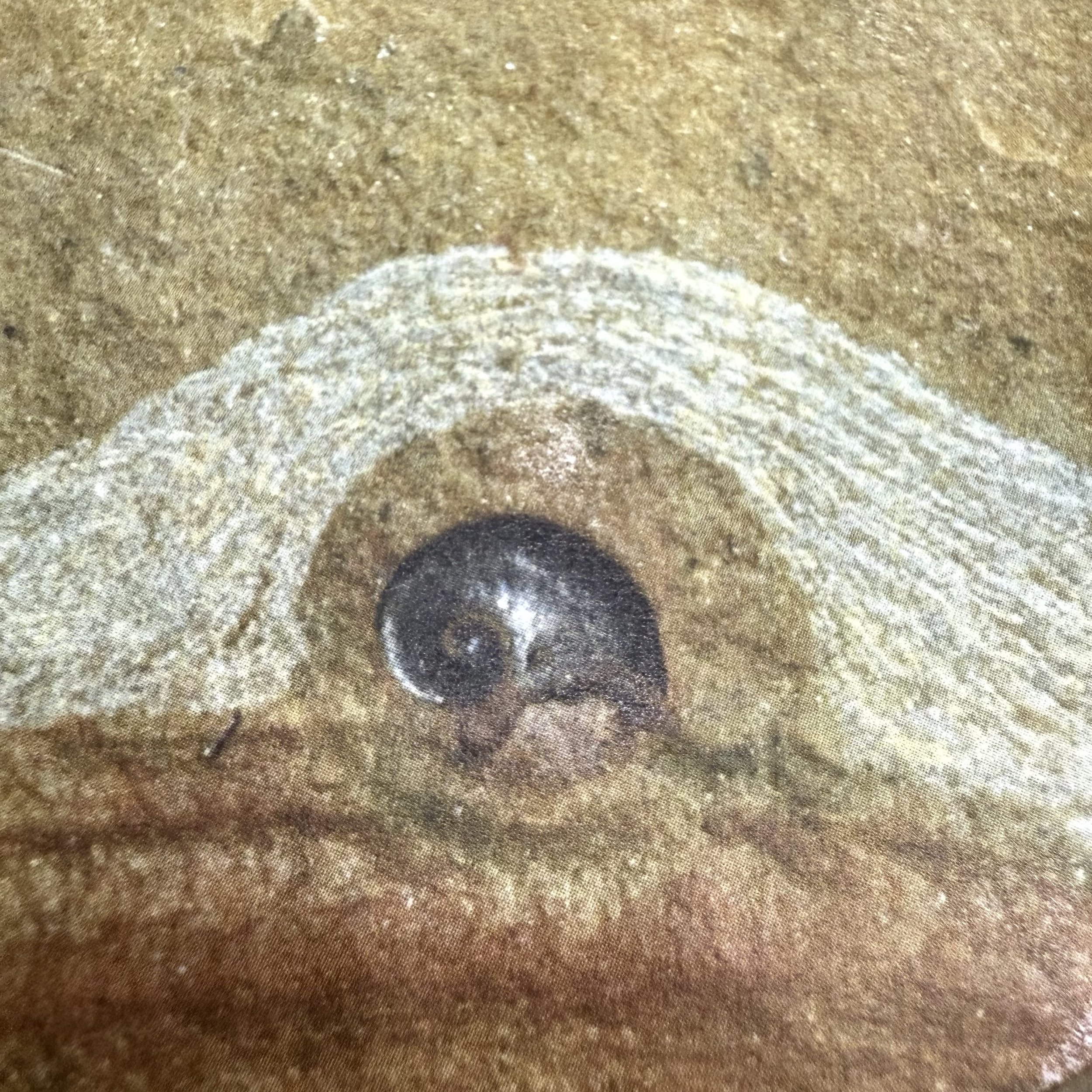 Image 1 of 5
Image 1 of 5

 Image 2 of 5
Image 2 of 5

 Image 3 of 5
Image 3 of 5

 Image 4 of 5
Image 4 of 5

 Image 5 of 5
Image 5 of 5






Branchiocaris pretiosa
Vendor: Gold Bugs
SKU Number: SQ3363614
A nice double specimen of the phyllocarid Branchiocaris from the Middle Cambrian rocks of Utah. Yet another example of Burgess Shale Fauna outside of the Burgess Shale, this piece hails from Utah and shows two carapaces of the animals. Partly disarticulated pieces of the soft tissue animal are preserved and displayed to the side of the larger specimen. A rare piece!
Full dimensions are listed below.
Vendor: Gold Bugs
SKU Number: SQ3363614
A nice double specimen of the phyllocarid Branchiocaris from the Middle Cambrian rocks of Utah. Yet another example of Burgess Shale Fauna outside of the Burgess Shale, this piece hails from Utah and shows two carapaces of the animals. Partly disarticulated pieces of the soft tissue animal are preserved and displayed to the side of the larger specimen. A rare piece!
Full dimensions are listed below.
Vendor: Gold Bugs
SKU Number: SQ3363614
A nice double specimen of the phyllocarid Branchiocaris from the Middle Cambrian rocks of Utah. Yet another example of Burgess Shale Fauna outside of the Burgess Shale, this piece hails from Utah and shows two carapaces of the animals. Partly disarticulated pieces of the soft tissue animal are preserved and displayed to the side of the larger specimen. A rare piece!
Full dimensions are listed below.
Additional Information
Phyllocarids belong to a subclass of crustaceans that include the extinct order of Hymenostraca. They had a large external, dorsally hinged carapace that covered the cephalothoracic region that contained multisegmented paired appendages and rounded mandibles. Phyllocarids are thought to have had a lifestyle very similar to shrimps. They are morphologically varied, have extant relatives, and an extensive and long-ranging fossil record (Rolfe, 1969)
References:
Phyllocarida
Branchiocaris
Early evolution of Phyllocarid arthropods: Phylogony and Systematics of Cambrian-Devonian Archaeostracans
